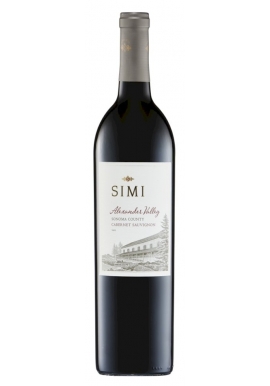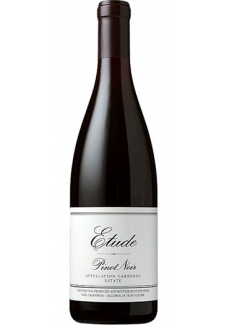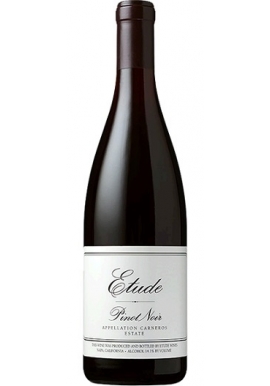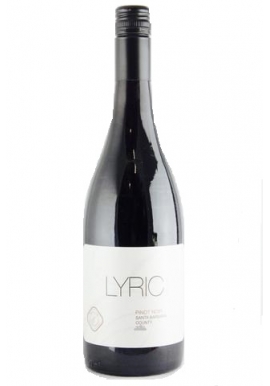Reds
USA Red Wines
Like any wine-country on the warm side of temperate, California is more at home with red wines than with white. Technology has vastly increased the possibilities with white wines. But with red they were there already.
Traditionally it is the wine-country just north of San Francisco Bay which is the red-wine area the lush valleys o...
USA Red Wines
Like any wine-country on the warm side of temperate, California is more at home with red wines than with white. Technology has vastly increased the possibilities with white wines. But with red they were there already.
Traditionally it is the wine-country just north of San Francisco Bay which is the red-wine area the lush valleys of Napa and Sonoma. Today, in fact, red and white plantings are more or less evenly distributed over all the fine vineyards, north, south and east of the Bay, but it is still in the Napa valley, above all, that the finest red wines are found.
The many wineries of the Napa valley consider themselves the best in the State, and certainly the finest Californian red wines which have come from Napa and the beautiful mountains round.
Napa is an Indian word for plenty. The upper part of the Napa valley, where civilization barely seems to have penetrated, is a sort of earthly paradise, so fruitful and green, so sculpted from the hills for protection
and privacy and peacefulness does it seem to be. The broad valley floor is planted for mile after mile with vines, interrupted only for a big stone winery building in a grove of gigantic oak trees, or a quiet white house with sprinklers hissing arcs of water on a green lawn.
The hills on either side are covered mainly with oak, or pine, or sometimes the bushy manzanita with its blood-red limbs. Only occasionally has the high ground been cleared to make way for a ramp, or a mound, or an amphitheatre of vine plants, which stand each on its own, like trees in an orchard, not staked and wired into hedges as they are in France. There is evidence, nonetheless, that the hills may give the best wine. Certainly any European wine-grower would expect it to be so. It is only sad to think that what may drive the wine-maker to plant in the hills in California is the encroaching of housing subdivisions on his flat land.
Cabernet Sauvignon: The great vine of Napa is the Cabernet Sauvignon. Some of the Napa Cabernets are in no way inferior to fine clarets, some of them are better than most clarets, and a few are almost as complex, subtle, scented and extraordinary as a first-growth claret of a fine vintage.
The same qualifications, however, apply to Californian red wine as to French: it is only the work of a fine and painstaking wine-maker which can ever come into this category—and his work will always be on a small scale. Furthermore, the wine needs time to mature just as French wine does. There is, therefore, a chronic shortage of the best Californian red wine in mature condition, and the greater part of it never reaches this condition at all.
Only one or two wineries in the whole State keep the wine themselves until they really consider it ready to drink; the rest sell it shortly after it is bottled, as the French do. There is a difference, though, between the French and the Californian practice. Claret is bought from a chateau straight after bottling in the full knowledge that it is not ready to drink, and will not be ready for several years. A merchant buys it and either keeps it himself while it matures, or sells it to a customer who will keep it. The American public, though, expects its wineries to sell everything in the condition to be drunk immediately.
They blame it on the winery, therefore, when it sells its Cabernets at three or four years old, saying (quite rightly) that they are not ready to drink. The market is therefore running on unaged wine, which has no prospect of being mature before it is drunk. Nor is there much prospect of it catching up with stocks of mature wine—for the demand is growing the whole time. The answer, I need hardly say, is for the customer to start a cellar, fill it with fine red wine and be patient.
Of the small quantity of well-made Californian Cabernet which does reach maturity, then, this can be said: it is one of the finest red wines in the world. It is interesting to compare it with a great Medoc or St-Emilion, for the grape is the same, though the conditions of growing it are very different. What is more, California uses the great character-giving claret grape on its own, without blending, whereas red Bordeaux is all made with a quantity of Merlot and Malbec grapes to modify its extreme hardness and strength of character.
In California, therefore, you find wine which typifies the Cabernet more than claret does. It is the Cabernet which gives the spiciness, the cigar-box scent, the warmth and richness of claret, as well as the astringent, grimace-making hardness of its early years. In California these qualities come triumphantly forward. The wine does start hard —though less unpleasantly so than in Bordeaux—but it finishes rich. The best of Napa valley Cabernets has wonderful warmth and fullness, through which its flavour comes with marvellous vividness.
If it lacks anything it is the sort of complexity of flavour which makes a great Bordeaux so endlessly worth tasting. One might hazard a guess that unrelenting varietal-mindedness has something to do with this. If Chateau Latour were made without its component 20 per cent of Merlot and Cabernet Franc who can doubt that it would be a less complex and subtle wine? They are in a small minority.
But the role of the secondary varieties is not yet defined in terms of the secondary flavours they can contribute. A Californian Cabernet is supposed to exhibit Cabernet character, not the character of a carefully thought-out blend.
The competition is very stiff indeed, with some of the best wines coming from new and tiny wineries. It is obviously more prudent to stick to well-established classics, like Louis Martini's, Beaulieu's Special Reserve, or the immensely full-flavoured Cabernet of Joe Heitz, perhaps the most distinguished single wine-maker of the whole Napa valley.
The Salinas Valley of Napa remains the heart of the Cabernet country. But it never had a valley monopoly, and even its lead in volume terms has disappeared in the vast new planting spree of the last few years.
The new area which has caused most excitement is considerably south of the classic Bay region, in a valley which has turned out to be like a climatic fault-line running inland and southwards from Monterey Bay.
The first moves in this direction were made, almost in desperation, by wineries like Almaden which were being elbowed out of their home-ground by the southwards spread of the complex of Bay cities. On the face of it they were moving nearer to the desert, and could only expect hotter weather.
But California's coastal climate has its own rules. The mouth of the Salinas valley acts (like the Golden Gate) as an entry point for cool ocean air. The planters found themselves with a problem they didn't expect: the near-gale off the Pacific as the day wore on and the land warmed up. Instead of concentrating on the sun they had to align their vine-rows to moderate the effects of this heat-tempering wind.
The most successful area to date has been the Carneros AVA, a cool district straddling Napa and Sonoma Counties and benefiting from the coastal fogs that waft in from San Francisco Bay. The afternoons and early evenings in Carneros are sufficiently warm to endow the developing grapes with the exciting flavours of ripe red fruits that are characteristic of the best Pinot wines. At the same time, the cooling influence of those thick mists, which often hang around until mid morning, ensure adequate levels of fresh acidity, so the wines are impeccably balanced and capable of aging.
Of course Oregon is equally important because of its cooler, damper climate, this Pacific territory when the search for appropriate vineyard sites began to gather momentum. Climatically, it is indubitably much closer to Burgundy than most of California, and there are indeed now some stunning wines. Oregon's premier cru region is the Willamette Valley AVA, which lies to the west of the Cascade Mountains. The style is generally lighter than in most of California, less meaty but more accentuated strawberry fruit, and generally approachable sooner.
Grape-growing in the Salinas valley was started by migrating wineries; Almaden, Paul Masson, Wente Bros, and Mirassou in particular. But the lettuce-farmers who were there already were not slow to get the idea. Within less than a decade, starting from scratch, the new wine valley will have about as many acres of vineyards as the Cote d'Or; all of them "premium varietals"; quite a bit of the total Cabernet Sauvignon.
Of course Pinot Noir oddly enough the great burgundy grape, the Pinot Noir, makes a comparatively undistinguished wine in California. It is still a premium wine, indeed possibly the next best after the Cabernet—but it never (or very rarely) approaches the quality of a fine burgundy in the way that a Cabernet draws near to Bordeaux. It makes, at best, a fairly light wine with a powerful and almost slightly fierce flavour. It is more like a light Rhone wine than a burgundy. Pinot Noirs, of course, vary from producer to producer as much as any wine.
Before all other grapes of any kind, however, in popularity and sheer quantity of production, California grows the Zinfandel, a kind unknown in Europe. Zinfandel is, as it were, California's own Beaujolais. Its price is low; it can be drunk young; it is seen everywhere. Like the best Beaujolais, too, the best Zinfandel gains distinction with age. Zinfandel has its devotees who find in it every virtue. It is an agreeable, light-coloured, slightly spicy wine, sometimes a little fiery. As a lunch- or supper-time wine, to accompany cold meat or a stew, it is perfect.
The Gamay of Beaujolais, in comparison with the Zinfandel, is little grown. The wine it makes (which is known as Gamay Noir) come across as one of California's best roses.Several Italian grape-varieties are grown, chiefly by the Italian families who introduced them to the country. The most successful is the Barbera of Piedmont, which makes as good a wine in California as it does in its native land; a strong wine, full of purple colour and flavour, but inclining to be sharp—ideal, in fact, for rich Italian food.
Its fellow-countryman, the Grignolino, is also cultivated; though largely, it seems, for old time's sake.The most successful innovation of the University of California's grape-breeding programme, which is aimed primarily at finding good grapes for table wine in very hot areas, has been the Ruby Cabernet, a cross between Cabernet Sauvignon and one of the classic vines of vin ordinaire, the Carignane.
Enough of the character and flavour of the Cabernet has been kept to make a table wine of real individuality, while the Carignane parentage means huge crops happy in the heat. Paul Masson's Rubion is a Ruby Cabernet wine: its sweetness is the wine-maker's decision, not the grape's The reformation which is either due or actually in progress in the south of France (it is sometimes hard to tell which) should consider the Ruby Cabernet as a working compromise.
The great mistake in thinking of California wine, red or white but above all red, is to fall into the varietal trap. There is such obvious snob-appeal about varietals to a huge public still learning the ropes that any marketing-man is likely to be tempted. There is no absolute virtue in grape-names. Alsace wine is not better than Loire because it puts Riesling or Sylvaner on the label. Ultimately the best wine California produces, when the industry has had another century or two to shake down, may well be a blended wine without a varietal name. For that matter some of the best wine she produces today may lurk under the unfashionable title of Burgundy, or just plain old Mountain Red.
Reds There are 3 products.
Subcategories
-
Pinot Noir
California dreaming, inevitably though, we'll start out in California, where the global wine revolution first began in the second half of the 20th Century. It was, after all, the pioneer winegrowers of the Napa Valley and the researchers at the University of California - Davis who first asked questions about why wine tastes the way it does - and how to make it taste better.
The Carneros being the jewel in two crowns, like the Montrachet vineyard shared between the Burgundy appellations of Puligny-Montrachet and Chassagne-Montrachet,Carneros straddle the line between Sonoma and Napa Counties. The cool micro-climate it owes to the San Francisco Bay fog does not suit the Cabernet Sauvignon, but Merlot can do well. The exciting varieties though, are Pinot Noir and Chardonnay - both as still and as sparkling wines. Pinot Noir is one of the most successful varieties grown in the Carneros region.
Of course Pinot Noir oddly enough the great burgundy grape, the Pinot Noir, makes a comparatively undistinguished wine in California. It is still a premium wine, indeed possibly the next best after the Cabernet—but it never (or very rarely) approaches the quality of a fine burgundy in the way that a Cabernet draws near to Bordeaux. It makes, at best, a fairly light wine with a powerful and almost slightly fierce flavour. It is more like a light Rhone wine than a burgundy. Pinot Noirs, of course, vary from producer to producer as much as any wine.
-
$969.95
Etude Carneros Napa Valley Pinot Noir... Etude Carneros Napa Valley...
Etude winemaker Rob Fischer and associates, transformed the very finest Carneros and Napa Valley grapes into world-class wines sought out by the most discriminating wine lovers. In addition to its widely acclaimed Carneros Pinot Noir Etude winemaker Rob Fischer and...
-
$499.95
Etude Lyrics Pinot Noir 750ml x 12 Santa... Etude Lyrics Pinot Noir...
Etude Lyrics Pinot Noir has a pure ruby color, the Lyric by Etude captures the essence of Santa Barbara Pinot Noir in its opulence of true red fruit. Rich in ripe cherry, red raspberry and fresh strawberry, this youthful Etude Lyrics Pinot Noir drinks complex with hints of cinnamon, cardamom, sandalwood and cola. Etude Lyrics Pinot Noir Offers an elegant... Etude Lyrics Pinot Noir has a pure...
-
$169.95
Fickle Mistress Pinot Noir 750ml x 6... Fickle Mistress Pinot Noir...
Fickle Mistress Pinot Noir is dark crimson,Fickle Mistress Pinot Noir wine is bright and tempting. The nose begins with intense dark cherry and plum, unfolding to reveal sweet spice.Fickle Mistress Pinot Noir palate is tightly structured, yet generous and mouth filling with oak complexities supporting the fruit. Fickle Mistress Pinot Noir exquisite... Fickle Mistress Pinot Noir is dark...
ABN: 11 806 263 393
Liquor Licenses
337 526 06
360 674 16




